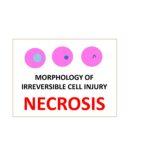Granulation tissue
What is granulation tissue? Granulation tissue is a type of tissue formed on the surfaces of a wound during the healing process. It is considered the hallmark of the healing process. The term
Read MoreCIRRHOSIS Part 2: Consequences and Clinical features
COMPLICATIONS OF CIRRHOSIS Consequences of portal hypertension 1. Increased blood flow through porto caval anastomoses leads to development of dilated veins at the lower end of oesophagus. These
Read MoreCIRRHOSIS part 1: Applied aspects, Basics, Etiology and Pathogenesis
Anatomy of the Liver: Lobes: The liver is divided into four lobes: the right lobe, left lobe, caudate lobe, and quadrate lobe. Segments: Each lobe is further subdivided into functional units called
Read MorePHEOCHROMOCYTOMA – PATHOLOGY
What is Pheochromocytoma, and where is it typically located? Pheochromocytomas are neoplasms of the adrenal medulla composed of chromaffin cells, which can release catecholamines and sometimes peptide
Read MoreMorphology of Irreversible cell Injury : NECROSIS
Define Necrosis: Necrosis is a process of localized cell death followed by the degradation of tissue by hydrolytic enzymes. It is characterized by the inability of the cells to maintain membrane
Read MoreAutopsy- Procedure
1. What are the precautions you should take before performing an autopsy? The general principles for ensuring safety involve recognition of risk, identification of hazards which give rise to these
Read MoreAutopsy – General Aspects
1. What is autopsy? The term "autopsy" derives from the Ancient Greek word – autopsia meaning "to see for oneself" (autos, "oneself") and (opsis, "sight, view"). Autopsy is a surgical procedure that
Read MoreMEDULLARY THYROID CARCINOMA
What is medullary thyroid carcinoma? A: Medullary thyroid carcinoma (MTC) is a form of cancer originating from the parafollicular cells (C cells) of the thyroid gland. These cells are known for
Read More







